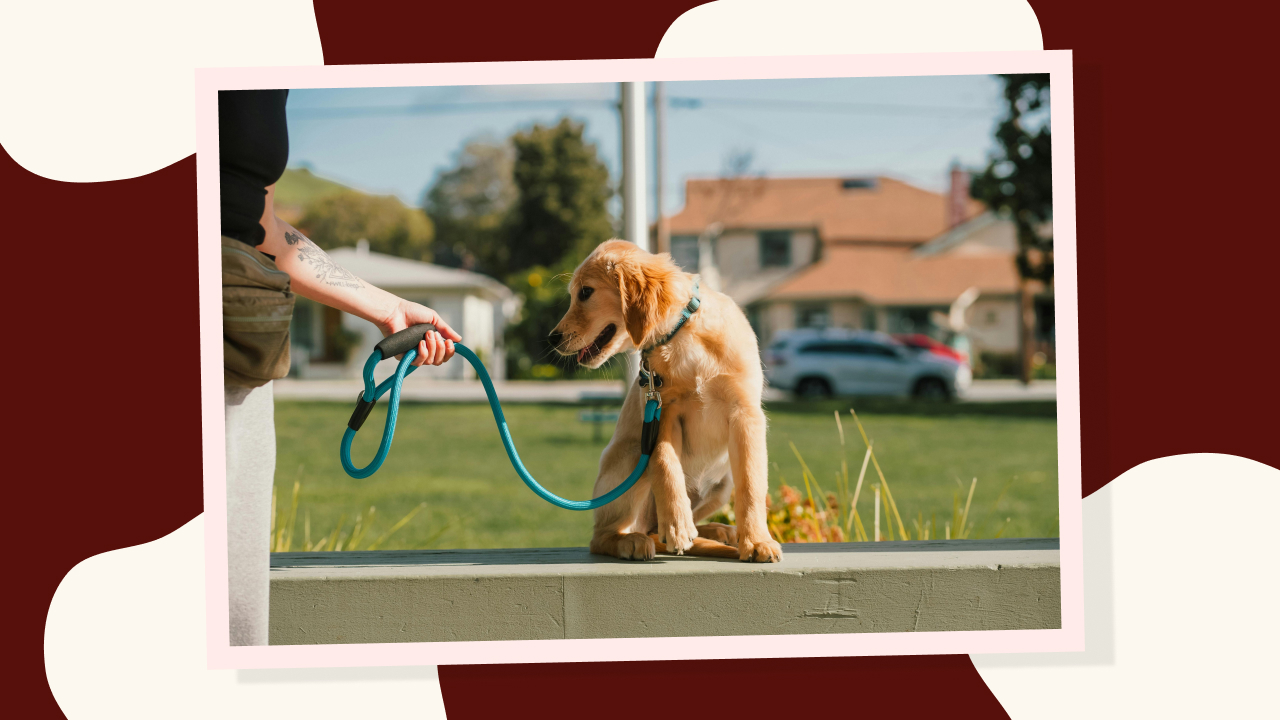
Train Your Puppy for Leash Walks: Step-by-Step Guide
If you’ve recently brought home or are about to bring home a new furry bundle of joy, you may be wondering how to train a puppy to walk on a leash. Unfortunately, that’s not a skill puppies are just born with. Training a puppy to walk on a leash can take time and patience.
Here’s everything you need to know about how to get a puppy to walk on a leash.
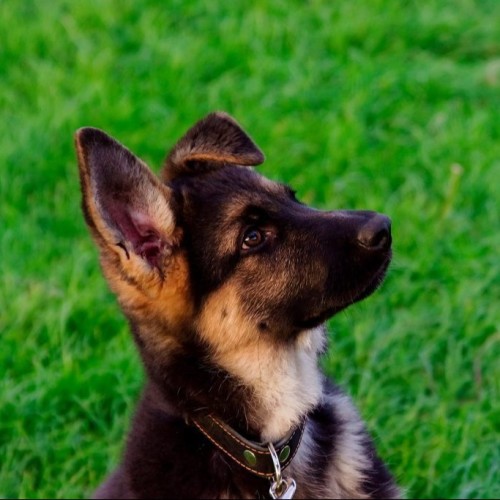
Preparing for Leash Training a Puppy
For best results when leash training a puppy, you want to pick the perfect collar or harness and introduce it and the leash to your puppy before you even start training.
Choosing the Right Collar or Harness
You need to choose a harness or collar that is tight enough that your puppy can’t slip out and escape but also loose enough that it doesn’t pinch. A general rule of thumb is that you should be able to slip two fingers between your puppy and their leash or collar.
Also, keep in mind that puppies grow! Try not to start with a harness or collar that’s already as big as it gets, since you’ll need to replace it quickly. Select a harness or collar that can be adjusted as your puppy grows.
Sighthounds (like Greyhounds and Afghans) and other breeds with small heads and narrow muzzles (as well as breeds with thick necks, like English Bulldogs) can slip out of a traditional collar more easily than dogs with blockier heads and skinny necks and do best with either a harness or a martingale-style collar.
You should also start with a four- or six-foot leash rather than a retractable leash since retractable leashes can injure both humans and dogs.
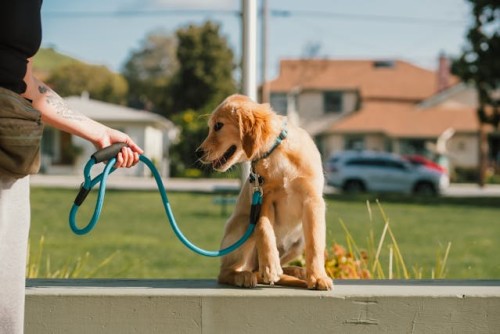
Familiarizing Your Puppy With the Leash
Let your puppy sniff the harness or collar and leash before you put them on for the first time, then reward your puppy with a high-value treat after you put the harness or collar on. Immediately take the harness or collar and leash off again. Do this a few times, then gradually leave the harness or collar on longer and longer inside the house so your puppy can get used to wearing it.
You can even let your puppy drag the leash around the house for a while as they get used to wearing their harness or collar and leash, so they learn that it’s not something to play with and that it’s associated with yummy treats.
Need a tasty high-value treat? Our subscribers can add delicious Nice-N-Bison Chips or Porktein Chips to their delivery orders. These dehydrated treats can easily be broken into tiny pieces that are perfect for training a puppy to walk on a leash.
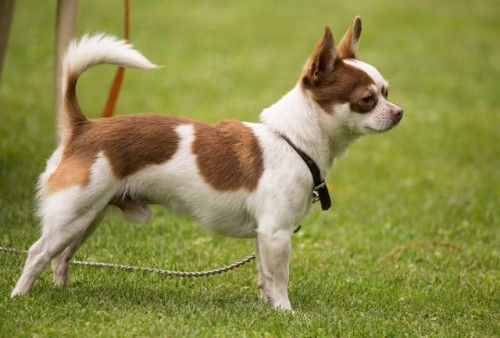
Training a Puppy to Walk on a Leash Step-by-Step
Once your puppy has had some time to get used to wearing their harness or collar and leash around the house, it’s time to start teaching your puppy to walk next to you while you hold the leash. Here’s how to leash train a puppy, step by step.
Introducing the Collar or Harness and Leash
After you have put on and removed the collar or harness and leash several times and rewarded your puppy, leave it on for a while and either let your puppy follow you around your home with the leash loose or tie the leash to you and periodically give your puppy treats. Before any other formal training, this will teach your puppy that staying near you when on the leash means getting rewarded with tasty treats.
Instilling a Cue to Promote Focus
Next, teach your puppy a sound cue to tell them that “food is coming.” You might use a clicker, click your tongue, or just say “yes,” but the intent is the same: you want to make the sound AS SOON AS your puppy does a behavior that you want, and then immediately reward your puppy with a treat. Your puppy will soon associate that sound with a reward and will understand that it means they did something right and will soon get something delicious.
How do you teach this sound cue? In a quiet room of your home, while your puppy is wearing their collar or harness and leash, make the sound, and as soon as your puppy looks at you, reward them with a treat. Your puppy will soon equate the sound with yumminess.
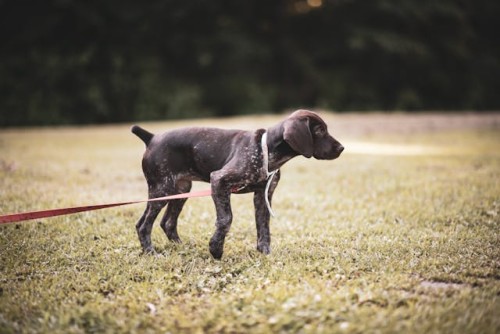
Motivating Your Puppy to Follow You
Once your puppy understands, take a few steps away before making the sound, and then reward your puppy once they reach you. You can gradually work toward having the puppy walk a few steps with you before making the sound and rewarding your puppy with a treat.
Keep in mind that puppies have short attention spans, so keep training sessions short and stop before your puppy gets too tired to care. Multiple short training sessions each day are much more effective than a single long session.
Conducting Initial Indoor Practice
Now that your puppy understands that coming to you and walking next to you with the leash on results in treats coming their way, try taking longer walks around your house, rewarding your puppy for every few steps they take next to you. There are fewer distractions indoors, making it the perfect place to practice leash manners before trying to get your puppy to cooperate outside.
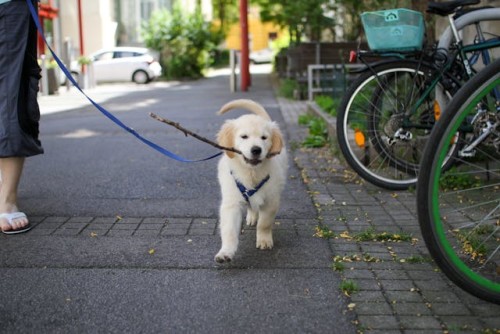
Graduating to Outdoor Adventures
Outdoors comes with numerous distractions, so start somewhere with the fewest distractions, like your backyard or an empty parking lot. Keep these first few outdoor walks short and try to make your cue sound and move a few steps away BEFORE your puppy lunges at or gets distracted by something. Then immediately reward your puppy for following you instead of getting distracted.
Gradually build up the length of your walks in the low-distraction area before moving your training sessions to a popular walking path full of distractions like people and other dogs. Little bit by little bit, you can teach your puppy to keep their focus on you and your treats instead of any other distractions you might come across during your walks.
Overcoming Common Leash Training Challenges
While some puppies may take to leash training right away, most puppies will have at least one or two challenges at some point during their training. Here are some of the most common leash training challenges and how to overcome them.

Addressing Pulling Behavior
If your puppy starts pulling on the leash, immediately stop moving and stay still until your puppy stops pulling and comes back to you. Your puppy will eventually learn that pulling on the leash actually PREVENTS them from going where they want rather than letting them drag you anywhere they want to go.
If you have a large-breed puppy that still tries to pull as it grows, front-hook harnesses and head halters can help you maintain more control over your dog so they’re less able to drag you when they pull. However, these tools should be used in conjunction with leash training, not as a replacement for it.
Managing Puppy Lunging
While herding breed puppies may be more likely to want to lunge at things they want to chase, any puppy may try to jump at things. Being proactive and using treats to lure your puppy’s attention away from something before they have a chance to lunge at it is the best way to stop this behavior in its tracks.

Reducing Barking During Leash Time
Ironically, dogs that don’t get enough exercise are more likely to bark, and dogs that bark while on walks are probably less likely to have the chance to go on walks. Try to give your dog more off-leash exercise (freezing raw dog food in an enrichment toy is a great way to help your pup expend physical and mental energy at home) and use the same techniques you would for a lunging puppy to try to distract your dog before they have a chance to bark.
Conclusion: The Rewards of Successful Leash Training
Leash training a puppy may be frustrating at times, but the result of your hard work and patience will be a lifetime of enjoyable walks with a dog who doesn’t pull on their leash.
You’re putting effort into leash training your puppy because you want to set them up for a successful, happy, and healthy life. Are you feeding them the best food to help them have as many quality years as possible?
We Feed Raw makes the best food you can feed your puppy for a lifetime of success. Our species-appropriate raw dog food meets AAFCO nutrition guidelines to be complete and balanced for dogs of all life stages, including the growth of large-breed puppies.
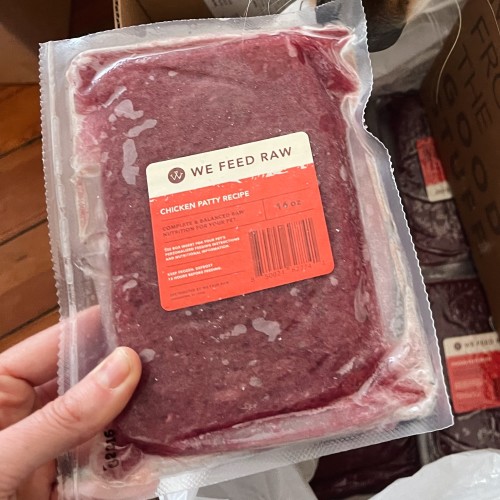
Worried about germs? We use a cold-pressure process to inactivate any potential pathogens, making our food safe for even sensitive puppy tummies.
Benefits of a raw diet include improved digestion; a stronger immune system; better weight control; a reduction in allergies; smaller, firmer stools; softer, healthier skin and coat; cleaner teeth; and more mealtime excitement.
Learn more about why We Feed Raw is the best food for your puppy here or take our quiz now to get your puppy started on the right paw with a species-appropriate raw diet.
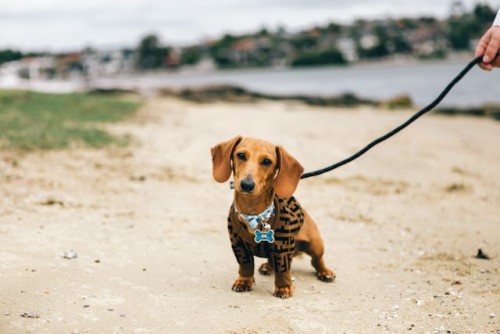
Frequently Asked Questions (FAQs)
How do I start leash training a puppy?
To start leash training a puppy, you want to first get them used to their collar or harness and leash inside your home by rewarding them with a treat immediately after putting it on, then removing it right away. After doing this a few times, gradually leave the harness or collar on longer and longer before you give your puppy a treat and remove the harness or collar.
Once your pup gets used to wearing their collar or harness, have them walk around with the leash either dragging on the ground or attached to you. Reward your puppy with a treat every time they get near you.
Gradually increase how long you have your puppy walk next to you inside the house, then start walking outside where there are more distractions. Be sure to reward your puppy with plenty of treats at first.
If your puppy pulls on the leash, stop walking and wait until they come back to you, then reward them with a treat and keep walking.
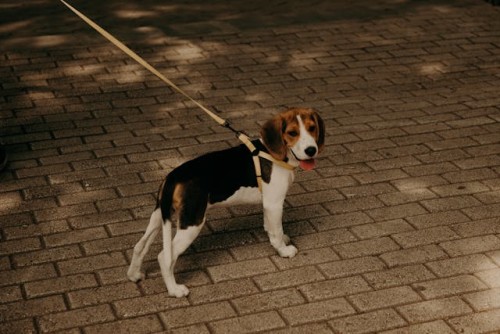
What's the best way to teach a puppy to walk on a leash?
The best way to teach a puppy to walk on a leash is to gradually introduce them to their harness or collar, then use treats to encourage them to walk beside you in your house before you eventually take the puppy outside and again reward them with treats for staying by your side while you walk.
Can you give me tips on how to train my puppy to walk on leash?
Sure. Here are some quick tips on how to train a puppy to walk on a leash.
Let them get used to their collar or harness first by rewarding them with treats after you put it on. Have them walk next to you in the house with their collar or harness and leash on and reward them with treats when they walk next to you. Keep training sessions short and sweet; puppies have short attention spans and you want to end on a positive note each time.
Outdoors, try to distract your puppy with treats before they can lunge, bark, or show other problematic behaviors. If your puppy pulls on the leash, stop walking and wait until they come back to your side, then reward them and keep walking. Use plenty of patience and treats, and understand this isn’t a skill your puppy will likely learn overnight.
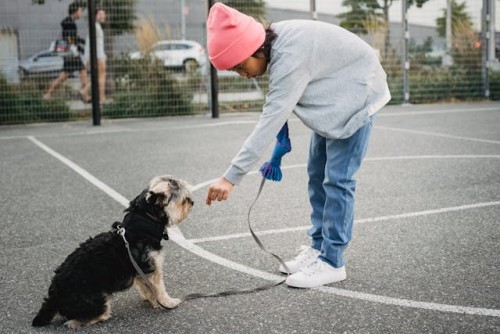
What are some effective puppy leash training techniques?
Here are some effective puppy leash training techniques:
•Start by just getting your puppy used to their collar or harness and leash indoors
•Use lots of treats to encourage your leashed puppy to walk next to you inside
•Try to reward your puppy with treats before they have a chance to bark or lunge at distractions outdoors
•Stop walking if your puppy starts to pull, and don’t start walking again until after they’ve returned to your side and you’ve rewarded your puppy with a treat
•Keep training sessions short and sweet
•Use plenty of patience, praise, and treats
How do I properly put a leash on a puppy?
First, let your puppy get used to their harness or collar inside with lots of praise and treats. Then, attach the leash and either let it dangle or tie it to yourself. Encourage your puppy to follow you around the house and reward them every time they’re next to you on the side you plan to regularly walk them on (traditionally your left side).
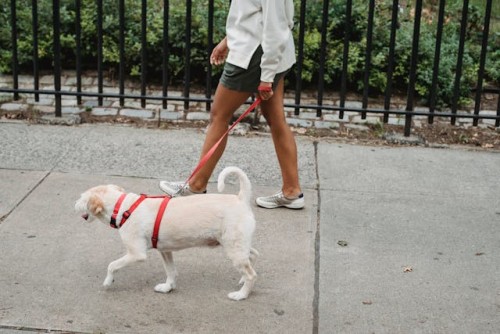
How long does leash training a puppy usually take?
Leash training a puppy can take anywhere from a few weeks to a few months depending on the puppy’s personality and your consistency with the training. As puppies grow, they may reach a point before adulthood where they become unruly “teenagers” and forget what they’ve learned, so you may need to do additional leash training then.
Are there specific steps for how to train a puppy to walk on a leash without pulling?
Yes. Here’s how to train a puppy to walk on a leash without pulling:
•Start indoors in a room with few distractions. Reward your puppy with treats when they walk close to you on the side you plan to walk them on in public.
•Once your puppy gets good at sticking by your side on a leash indoors, find an outdoor location with few distractions and again reward your puppy for walking by your side.
•If your puppy starts to pull on the leash, immediately stop walking. Wait until your puppy returns to your side, then reward them and start moving again.
•Use lots of patience, plenty of treats, and a lot of time to teach your puppy that it pays to walk next to you and that pulling on the leash is no fun because it results in going nowhere.
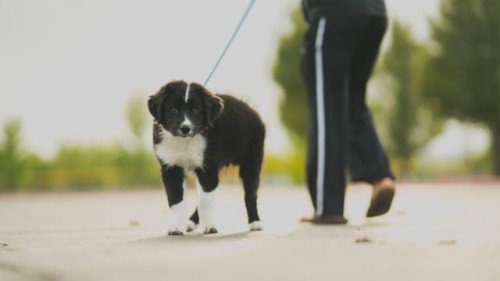
What should I do to teach a puppy to walk on a leash in the presence of distractions?
First, get your puppy really good at walking on a leash in a place with no distractions. Then, find a place with a few distractions and build up your puppy’s skills there. Gradually add more distractions until your puppy reliably ignores all distractions and chooses to walk next to you and focus on you rather than anything else in the environment.
What if my puppy doesn't follow during leash training?
Find something your puppy WANTS to follow during leash training and use that to reinforce positive behaviors. For most puppies, a stinky, delicious treat is a reward worth following. Other puppies may be more motivated by praise or playing with their favorite toy. Find out what motivates your puppy and use that to reward them for following you during leash training.
What are some common problems with training a puppy to walk on a leash, and how can I address them?
Here are some common problems with training a puppy to walk on a leash and how to address them:
Pulling: If your puppy starts pulling on the leash, immediately stop and wait for them to return to your side. Then, reward them with a treat before moving forward again.
Lunging: If your puppy lunges at dogs, people, cars, or other distractions, try to stay ahead of it. Reward your puppy with a treat before they even have a chance to lunge at the distraction and teach them that focusing on you is more rewarding than any distraction could be.
Barking: Similar to lunging, if your puppy barks, try to reward them before they have a chance to bark and distract them from what they want to bark at with a treat. Eventually, your puppy will learn that ignoring distractions instead of barking at them results in more treats.
As you dedicate time and patience to leash training your new puppy, ensuring they are healthy, vibrant, and full of the energy needed for successful learning is just as crucial as the training itself. Proper nutrition plays a pivotal role in your puppy's development and their ability to focus and follow your lead during training sessions.
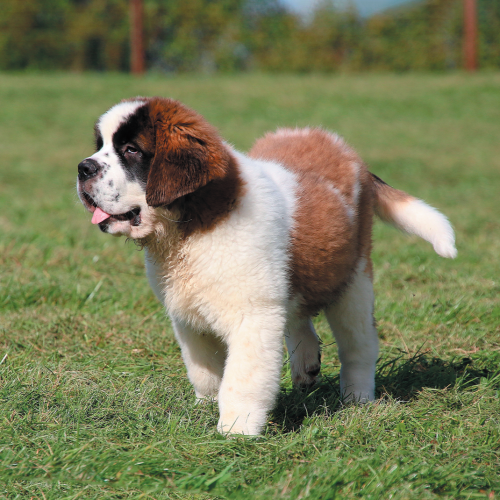
For Best Success, Switch to Raw Puppy Food
At WeFeedRaw.com, we understand the importance of a nutritious diet in your puppy's formative months. Our species-appropriate raw dog food is designed to meet and exceed AAFCO nutrition guidelines, catering to all life stages, including large-breed puppies prone to rapid growth. With a balanced raw diet, your puppy benefits from optimal digestion, a robust immune system, better weight management, and a shiny coat—all factors contributing to a more focused and trainable companion.
Are you concerned about the potential for pathogens in a raw diet? Rest assured, our cold-pressure process ensures that every meal is safe for even the most sensitive puppy tummies. By choosing We Feed Raw, you're not just investing in high-quality training treats like our Nice-N-Bison Chips or Porktein Chips; you're ensuring that every meal supports your puppy's overall well-being and training progress.
Ready to lay the foundation for a lifetime of wellness and obedient leash walks with your furry friend? Visit WeFeedRaw.com to learn more about the exceptional benefits of a raw diet. Take our quiz today, and discover how a personalized, raw meal plan can go hand-in-hand with successful leash training, setting your puppy on the path to becoming a well-behaved and healthy adult dog. Start your journey with We Feed Raw now, and experience the joy of mealtime excitement that aligns with your training goals.
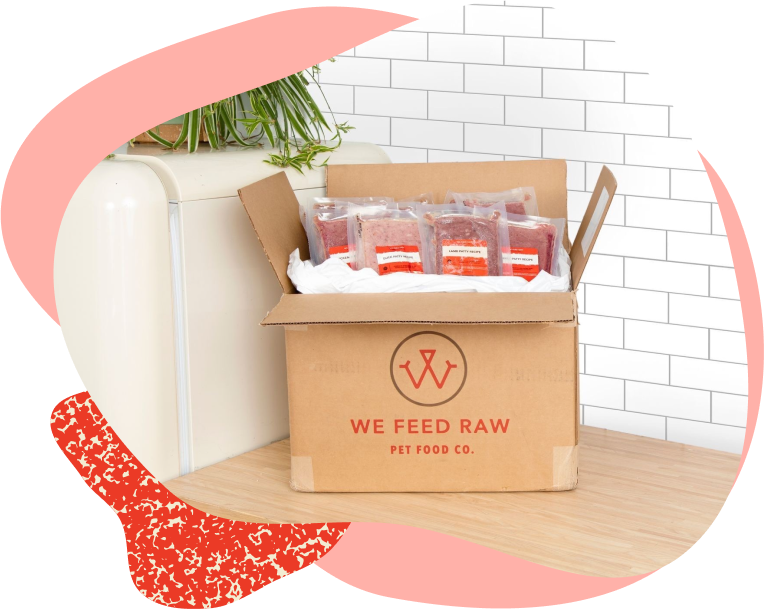
Complete & balanced raw meals.
Portioned out, packaged up, and cold-shipped (for FREE!).
